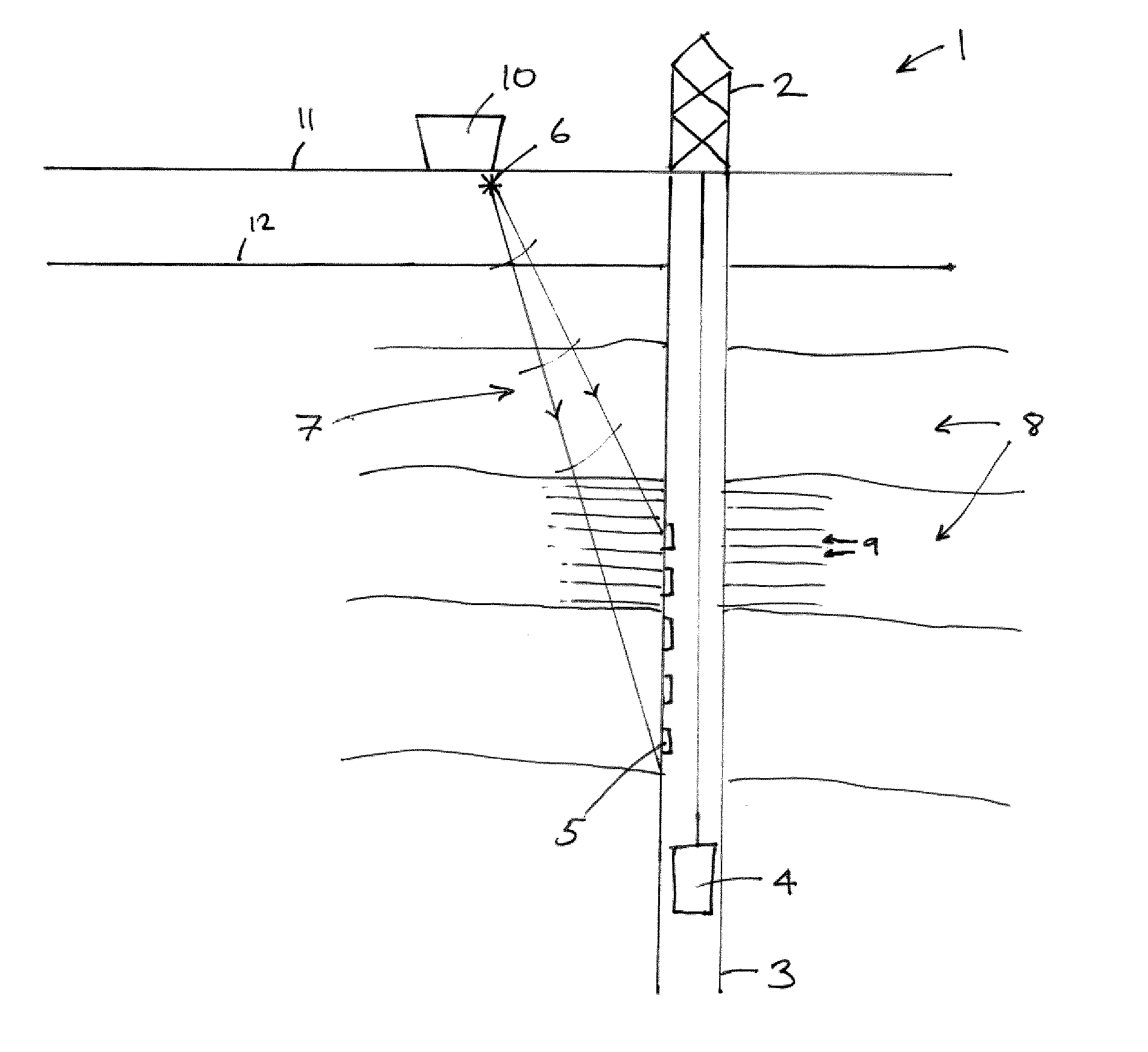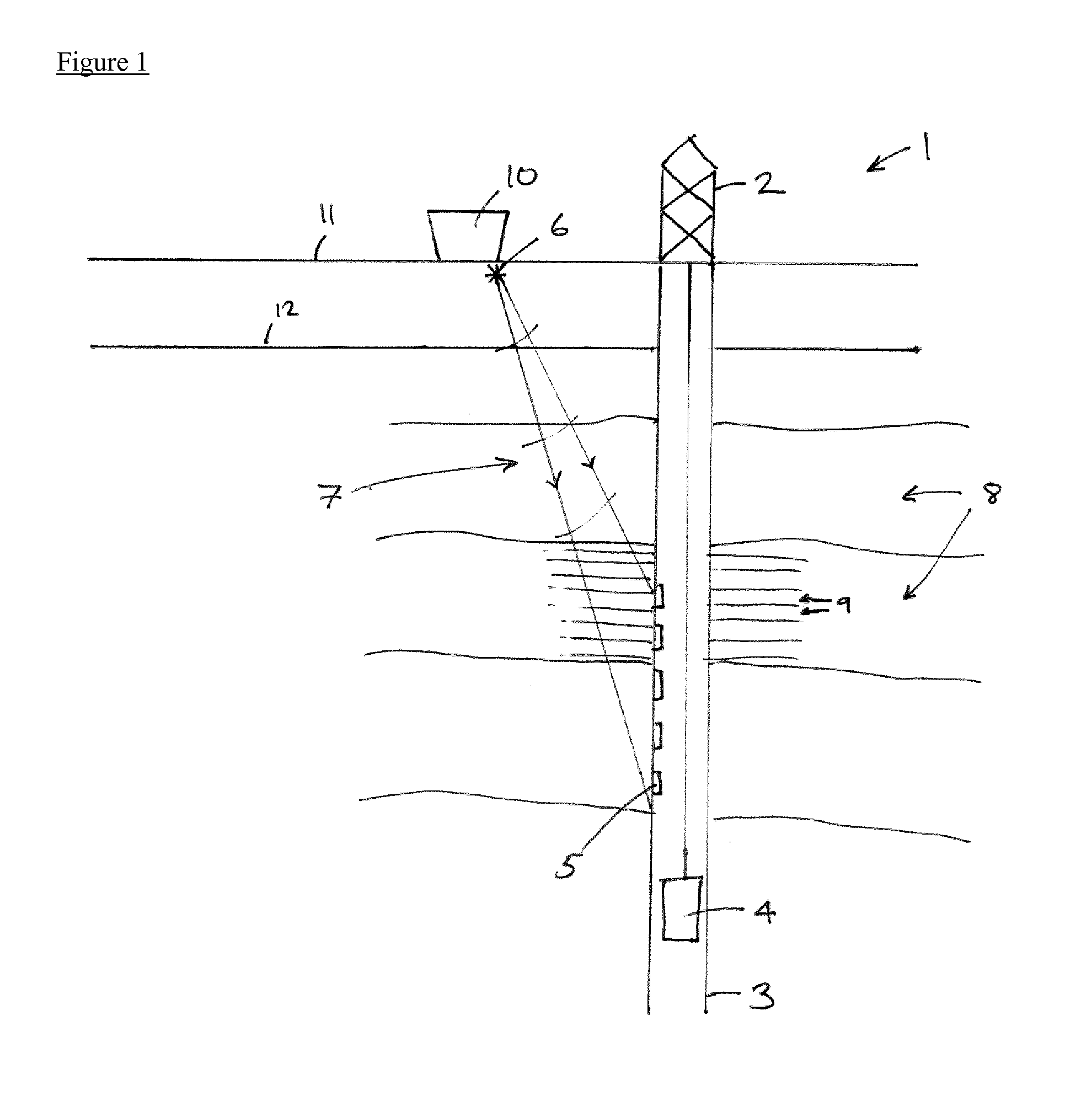High Resolution Estimation of Attenuation from Vertical Seismic Profiles
- Summary
- Abstract
- Description
- Claims
- Application Information
AI Technical Summary
Benefits of technology
Problems solved by technology
Method used
Image
Examples
Embodiment Construction
[0112]Certain preferred embodiments will now be described by way of example only and with reference to the accompanying drawing, in which FIG. 1 shows a schematic view of an exemplary VSP dataset-gathering apparatus.
[0113]Regarding FIG. 1, the VSP dataset-gathering apparatus 1 comprises a rig 2 positioned above a well bore 3. Descending into the well bore 3 from the rig 2 is a wireline logging tool 4 which is able to collect well log data (which may comprise information correlating depth to rock-type). The wireline logging tool records the depth of various geological layers, which include both main geological layers 8 and fine geological layers 9. Coupled to the side of the well bore 3 is a plurality of receivers 5. Each receiver 5 is placed at a selected known depth. A seismic source 6, which may be at or near a vessel 10 on the sea surface 11 above the seabed 12, generates seismic wavefields 7. The wavefronts of the seismic wavefields 7 are detected by the receivers 5, and a corre...
PUM
 Login to View More
Login to View More Abstract
Description
Claims
Application Information
 Login to View More
Login to View More - R&D
- Intellectual Property
- Life Sciences
- Materials
- Tech Scout
- Unparalleled Data Quality
- Higher Quality Content
- 60% Fewer Hallucinations
Browse by: Latest US Patents, China's latest patents, Technical Efficacy Thesaurus, Application Domain, Technology Topic, Popular Technical Reports.
© 2025 PatSnap. All rights reserved.Legal|Privacy policy|Modern Slavery Act Transparency Statement|Sitemap|About US| Contact US: help@patsnap.com



